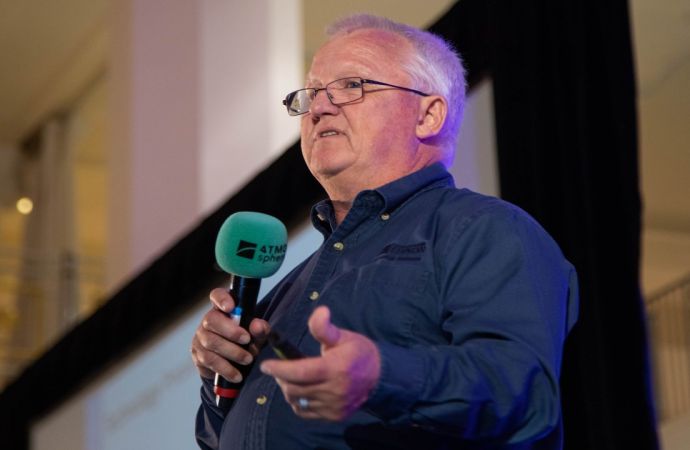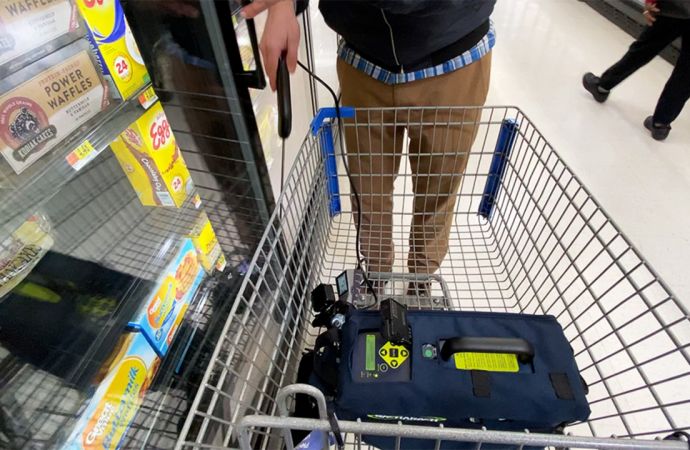The EPA plans to complete a new SNAP rule within the next year. Environmental organisations, riled by the EPA’s decision to push back many of the delisting dates for HFCs, filed petitions seeking concrete deadlines to end numerous HFC uses.

EPA update on SNAP programme at the FMI Energy conference
During the recent FMI Energy & Store Development conference, Rebecca von dem Hagen (U.S. Environmental Protection Agency) gave an overview of the Significant New Alternatives Policy (SNAP) programme actions under President Obama’s Climate Action Plan, as well as an update on the Clean Air Act (section 608 - regulations on refrigerant management), hydrofluorocarbons (HFC) phase out and federal and international procurement activities.
Von dem Hagen spoke about the EPA’s rule, published this July, prohibiting certain high-GWP HFCs as alternatives under the SNAP programme and explained changes made to the many of the delisting dates.
For instance, in retail food refrigeration applications, the use of HFCs R404A, R507A and others in new supermarket systems are to be delisted from 1 January 2017 rather than the initial proposal of January 2016. R404A, R507A and other HFCs will be delisted from use in new remote condensing units in supermarkets as of 1 January 2018.
The rule will leave perhaps its greatest mark on self-contained refrigeration units. HFCs R134a, R404A, R407A and R507A, in new stand-alone medium- and low-temperature units in supermarkets will be unacceptable as of 1 January 2020 (and by 1 January 2019 in new medium-temperature units not containing a flooded evaporator and with a capacity below 2,200 BTU/hour).
Refrigerants such as R134a, R404A, R507A and several others will be unacceptable in new vending machines by 1 January 2019.
Environmental organisations call on EPA to ban HFCs
Although EPA predicts the use of HFCs to grow by 20% by 2020, in July 2015 it was swayed by industry stakeholders to revise the delisting dates for many HFCs and HFC blends, pushing back many of them by at least one year.
The Natural Resources Defense Council (NRDC) and the Institute for Governance and Sustainable Development (IGSD) filed a petition with EPA to end certain uses of short-lived climate pollutants (SLCP) known as HFCs. The Environmental Investigation Agency (EIA) also filed a petition. The NRDC, IGSD and EIA petitions seek to remove many HFCs from the list of acceptable substitutes for certain end uses under the EPA’s SNAP programme.
These petitions request the EPA to use SNAP to set deadlines for replacing HFCs with climate-friendly alternatives in commercial water chillers, refrigerators, portable air conditioners, residential air conditioners, commercial rooftop units, medium- and heavy-duty vehicles, cold storage warehouses, foams, and other applications. Among many others, they address high-GWP HFCs such as R-404A, R-134a, R-410A.
EPA continues to engage with stakeholders through GreenChill webinar
On 6 October, the EPA conducted a GreenChill webinar on recent actions concerning the SNAP program.
Hufford also briefly mentioned the outcome of the 11 September stakeholder meeting, as the EPA continues considering a future rule. Hufford noted that they are in the early stages now, not even at the proposal stage. That said, the EPA is looking at listing more acceptable/unacceptable alternatives.
Tom Land (EPA Stratospheric Protection Division, GreenChill Partnership) noted that utility providers are starting to offer incentives for the use of low GWP alternatives around the U.S. “They are working with the supermarket industry and trying to evaluate advanced refrigerants and provide incentives for these refrigerants,” he said while suggesting that industry attendees contact utility providers about possible incentive schemes.
Next steps
As identified by Dave Godwin (EPA Stratospheric Protection Division) in the GreenChill webinar, the EPA has multiple tasks related to examining acceptable alternatives, as well as continuing to expand the SNAP list with the possible notice in the future.
“We will develop a new notice for acceptable listings and a rule to include more alternatives, but it’s too early to know the timing for that,” said Godwin.
During the recent FMI Energy & Store Development conference, Rebecca von dem Hagen (U.S. Environmental Protection Agency) gave an overview of the Significant New Alternatives Policy (SNAP) programme actions under President Obama’s Climate Action Plan, as well as an update on the Clean Air Act (section 608 - regulations on refrigerant management), hydrofluorocarbons (HFC) phase out and federal and international procurement activities.
Von dem Hagen spoke about the EPA’s rule, published this July, prohibiting certain high-GWP HFCs as alternatives under the SNAP programme and explained changes made to the many of the delisting dates.
For instance, in retail food refrigeration applications, the use of HFCs R404A, R507A and others in new supermarket systems are to be delisted from 1 January 2017 rather than the initial proposal of January 2016. R404A, R507A and other HFCs will be delisted from use in new remote condensing units in supermarkets as of 1 January 2018.
The rule will leave perhaps its greatest mark on self-contained refrigeration units. HFCs R134a, R404A, R407A and R507A, in new stand-alone medium- and low-temperature units in supermarkets will be unacceptable as of 1 January 2020 (and by 1 January 2019 in new medium-temperature units not containing a flooded evaporator and with a capacity below 2,200 BTU/hour).
Refrigerants such as R134a, R404A, R507A and several others will be unacceptable in new vending machines by 1 January 2019.
Environmental organisations call on EPA to ban HFCs
Although EPA predicts the use of HFCs to grow by 20% by 2020, in July 2015 it was swayed by industry stakeholders to revise the delisting dates for many HFCs and HFC blends, pushing back many of them by at least one year.
The Natural Resources Defense Council (NRDC) and the Institute for Governance and Sustainable Development (IGSD) filed a petition with EPA to end certain uses of short-lived climate pollutants (SLCP) known as HFCs. The Environmental Investigation Agency (EIA) also filed a petition. The NRDC, IGSD and EIA petitions seek to remove many HFCs from the list of acceptable substitutes for certain end uses under the EPA’s SNAP programme.
These petitions request the EPA to use SNAP to set deadlines for replacing HFCs with climate-friendly alternatives in commercial water chillers, refrigerators, portable air conditioners, residential air conditioners, commercial rooftop units, medium- and heavy-duty vehicles, cold storage warehouses, foams, and other applications. Among many others, they address high-GWP HFCs such as R-404A, R-134a, R-410A.
EPA continues to engage with stakeholders through GreenChill webinar
On 6 October, the EPA conducted a GreenChill webinar on recent actions concerning the SNAP program.
“We intend to continue looking at the alternatives by individual sectors, so within sectors and within the applications of end uses. Within that framework we are not looking at the across the board cut off based on GWP level. Instead we are looking at the available alternatives for individual end uses. It means that we are not going to ban any particular HFC as a whole, across the board or in any particular sector. It also means that we will continue delisting the new HFCs or blends if in any particular contact there are any other substances available,” said Drusilla Hufford (Director of EPA’s Stratospheric Protection Division).
Hufford also briefly mentioned the outcome of the 11 September stakeholder meeting, as the EPA continues considering a future rule. Hufford noted that they are in the early stages now, not even at the proposal stage. That said, the EPA is looking at listing more acceptable/unacceptable alternatives.
Tom Land (EPA Stratospheric Protection Division, GreenChill Partnership) noted that utility providers are starting to offer incentives for the use of low GWP alternatives around the U.S. “They are working with the supermarket industry and trying to evaluate advanced refrigerants and provide incentives for these refrigerants,” he said while suggesting that industry attendees contact utility providers about possible incentive schemes.
Next steps
As identified by Dave Godwin (EPA Stratospheric Protection Division) in the GreenChill webinar, the EPA has multiple tasks related to examining acceptable alternatives, as well as continuing to expand the SNAP list with the possible notice in the future.
“We will develop a new notice for acceptable listings and a rule to include more alternatives, but it’s too early to know the timing for that,” said Godwin.
MORE INFORMATION
Related stories



